Volume 1, Issue 1
June 1, 2022

In This Issue: Getting to Know Allison Cardona | Cal for All Call | Portals | Four Rights Webinars | Bootcamp Grads | We Dream Different
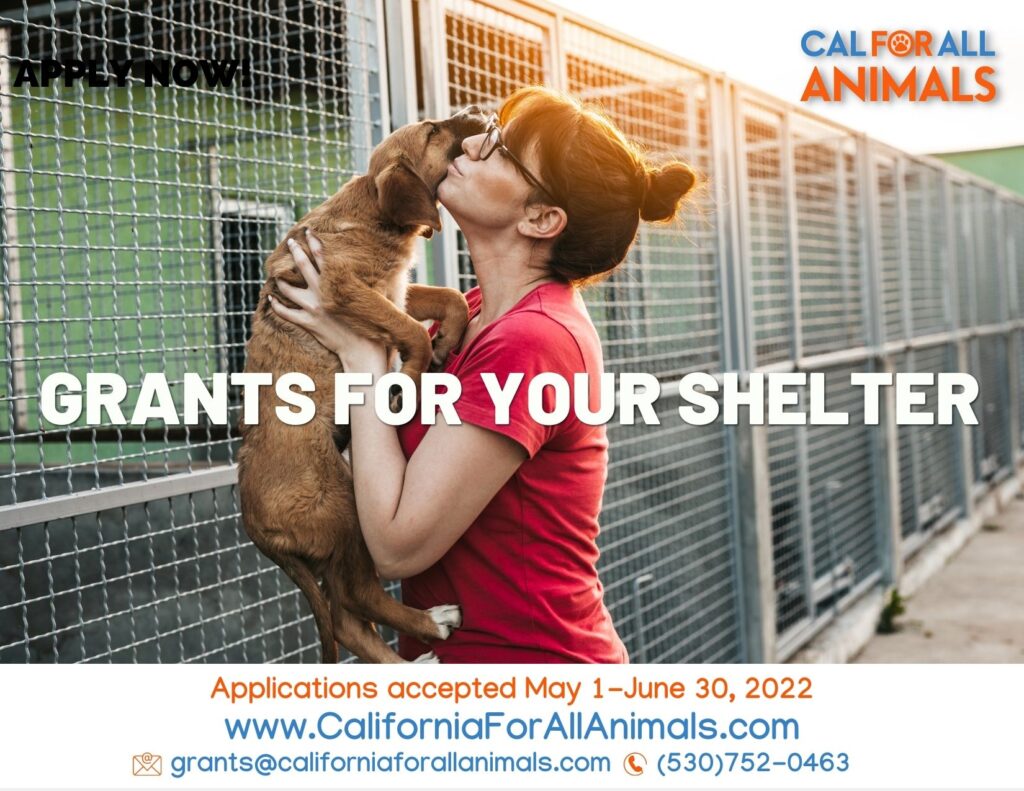
Grant applications are now being accepted!
Have a good idea you want to try? Looking to expand an already successful program? Hit us up! Our Open Grants period lasts through June. Not sure what to ask for? We’re happy to talk it through. Read more on our Open Grants page.
Getting to Know Allison Cardona: “It’s all about connection”
An Interview with Our California Director
In your Candid Conversation with Maddie’s Fund, you mention that you started out in marketing in New York City and didn’t realize a career in animal welfare was even a possibility—until your curiosity about community cats in a parking lot led you to learn more about TNR and, eventually, to a job ad for the ASPCA, where you would go on to work for 14 years. Since then, you’ve worked as deputy director for the Los Angeles County Department of Animal Care and Control, and you’re now the California State Director here at the KSMP. How has your perspective or approach changed since that day you encountered those cats in the parking lot, and how has it stayed the same?
People and animals are interconnected. I think I understood that intellectually but it didn’t hit home until I experienced it. I became curious about the cats in the parking lot because I was concerned about their well-being. What I came away with is how much collaboration with people was needed to reach the desired outcome. TNR was less well known so I had to convince local veterinarians to help, I had to connect with rescue groups to get supplies and learn how to trap, I had to outreach to community members to adopt out the kittens. It was about so much more than tending to the needs of the cats. I would like to think I have learned a lot since that parking lot twenty years ago. How to listen and empathize; try to understand where people are coming from instead of judging. Something that has stayed the same is curiosity and questioning why things are being done the way there are.
A follow-up question to this might be—What, if anything, surprised you about animal welfare or the people you encountered through your work in the field? What would you tell young Allison about the turn her career path would take?
I was surprised by how separate animal welfare is from other social justice movements. I think we are just now learning how to talk about intersectionality and how societal issues impact people’s ability to care for animals in a way that is engaging and not alienating.
Ah, young Allison! I would tell her to keep going and take up space, that she deserves to be here. And to take more days off—you don’t get time back.
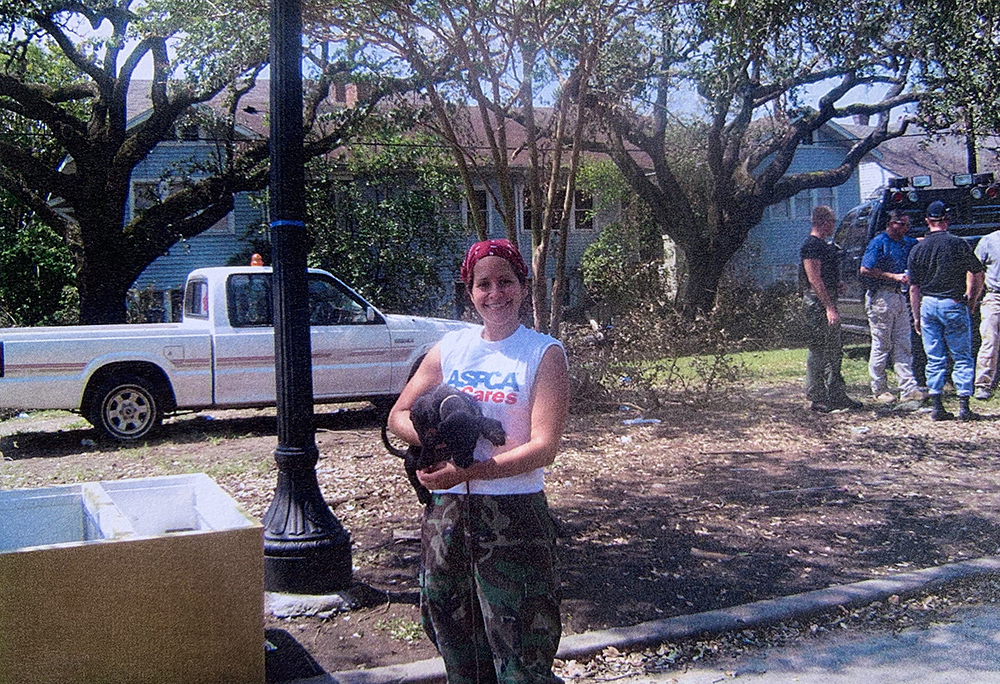
During your time at LA County, Animal Care and Control received multiple awards for its Managed Intake and Enhanced Placement programming. You’ve mentioned that listening to the community was a really important aspect of the work, and, as the largest animal care and control system in the country, that community is huge and diverse: that’s seven animal care centers serving over 3 million people! Why do you think it’s so important to make space to listen? Is there one personal experience of listening that has stuck with you?
I am very grateful that I had the opportunity to serve LA County for five years and to meet so many people with diverse stories and experiences. I definitely learned that one size does not fit all and flexibility is key. We made a point of hosting community forums, town halls and gatherings to hear from the communities we served. It helped personalize the issues and opened my eyes to how people perceive things differently, and it reminded me to not dismiss perspectives.
For example, we were working with the Housing Authority and Homeless Services to draft a pet-friendly housing ordinance for new apartment developments. We hosted listening sessions with service providers, developers, and people experiencing homelessness. I distinctly remember the session with people experiencing homelessness, where folks talked about the bond with their pet and what it meant to have them in their lives. I know the incredible role pets play so I expected to hear that sentiment. But we also heard from folks who had been placed in supportive housing and were scared of the dogs that were being walked off-leash or who barked and lunged while on leash. They talked about not being able to run away from a dangerous dog. Hearing that feedback allowed the ordinance team to look at what guidelines needed to be in place to ensure the safety and well-being of all residents. I’m happy to report that the ordinance was adopted in early 2020 with guidelines in place.
We came together as an industry and have started talking and connecting more than ever. I know we can harness that collective energy and brainpower to shape the future. And the investment of resources makes me hopeful—when we invest in communities, everyone benefits.
When you’re not working in the shelter or in the community, what helps ground you? What gives you life?
As I get older, I want to spend more time with the people I care about. Thinking about younger Allison, I have definitely been focused on work and being of service, to the detriment of some of my personal relationships. I make time to get outside and walk every day and to listen to the birds and sounds of the neighborhood. I love going to flea markets like the Queer Mercado in East LA and local shops like The Plant Chica, The Salt Eaters Bookshop and Hilltop Coffee. I also volunteer with the Downtown Women’s Center and Hearts for Sight Foundation, and I just signed up with Big Brothers Big Sisters LA. It’s all about connection for me these days.
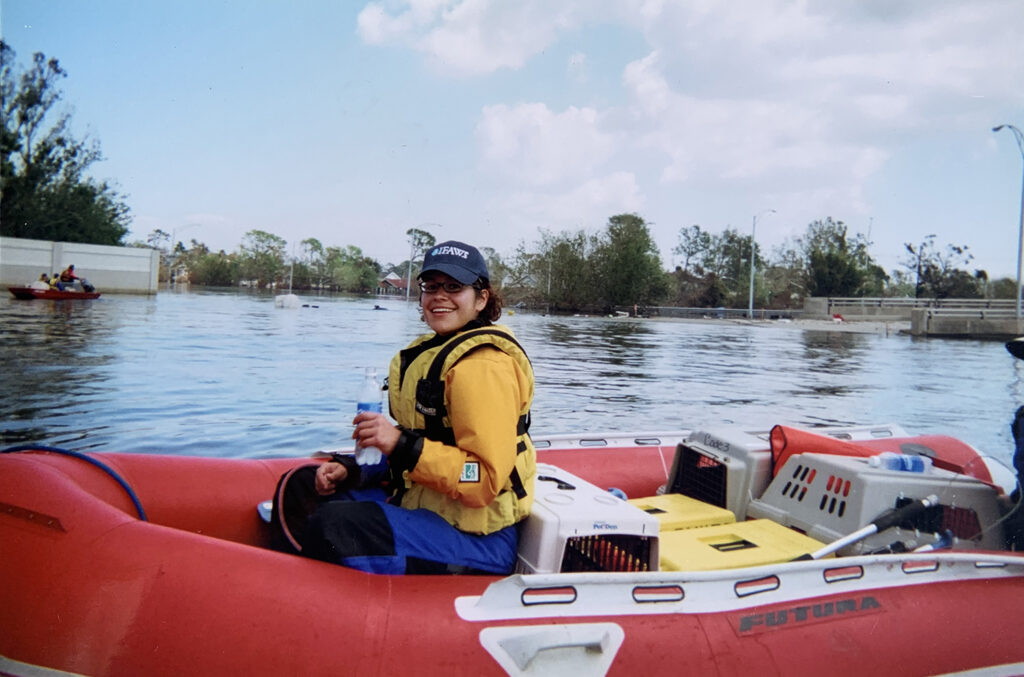
You joined the KSMP as California State Director just before the launch of California for All Animals in February. What do you dream we might accomplish, all of us together, through this movement? What does a California for all animals look like, feel like, sound like to you?
First of all, how incredible is it that California made this commitment to animal health and well-being! I am so proud to be part of this moment and opportunity. I would love to see more connection between animal organizations, advocates and communities—to see us all working together to come up with solutions and get creative. I’d also like to see communities that have been excluded from mainstream animal welfare embraced and centered. Black, Indigenous, and people of color have not had a seat at the table, to the detriment of our collective movement. As a queer Latina and the daughter of immigrants, I hope I can inspire and open the door for others.
What keeps you hopeful about the possibility of small- and large-scale change in animal sheltering, both in California and in the field at large?
Look what we have gone through and are going through—the past two years brought seismic shifts in how we operate. We came together as an industry and have started talking and connecting more than ever. I know we can harness that collective energy and brainpower to shape the future. And the investment of resources makes me hopeful—when we invest in communities, everyone benefits.
What’s on your read/watch/listen list right now?
I love Abbott Elementary—it is so earnest and heartfelt! The Summer of Soul, the documentary that highlights an incredible summer of music and activism in Harlem; the Latino USA podcast, including the great episode about mapping indigenous migrant languages in California; and I am reading Cicely Tyson’s autobiography, Just As I Am. Her resilience and humor are giving me life!
Cal for All Call
To begin our inaugural call, KSMP Outreach Veterinarian Dr. Cindy Karsten introduced the concept of Capacity for Care for Us, which is based on the recognition that when our shelters operate at their capacity for care, we not only do better for our animals, communities, staffs and volunteers, but we also create more humane conditions for ourselves as shelter leaders.
At subsequent calls, we explored some of the issues most on the minds of shelter leaders at the moment: staffing and community relations.
Our guest facilitators include BJ Rogers, Karen Green, and José Ocaño, all accomplished animal welfare leaders and adept communicators. Each of them focuses on a different aspect of “capacity for care for us” for the calls, be it values, communication or self-reflection.
Values: BJ Rogers
“When I joined the animal welfare field back in the early 2000’s,” he recalls, “it was as executive director of a small shelter in northern New England, in Vermont, and I had no idea what the hell I was doing but I came to that work from the human service and social service sector, from advocacy and a little bit of politics, and I thought that it would be a delight to not work with people anymore but to work on behalf of animals. It was somewhere between 20 and 30 minutes in on the first day that I realized I had moved from one human service organization to another human service organization. And it was about 45 minutes in on that day that I realized I was exactly where I was supposed to be and what I brought to the role that might have some value was an understanding that people drive the well-being of animals in profound and meaningful ways.”
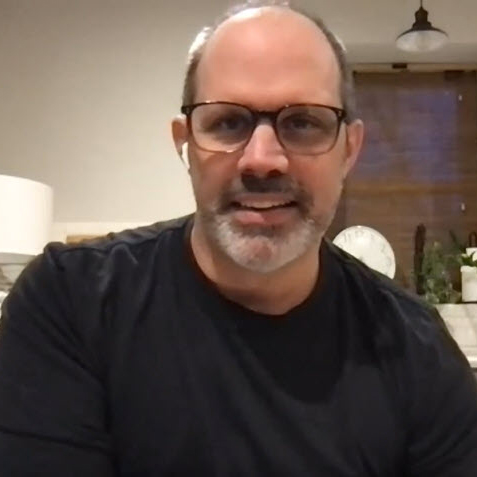
BJ is currently Chief Learning Officer at Emancipet. He is a certified dialogue education teacher, certified animal welfare administrator and has completed a certificate of public leadership at the Harvard Kennedy School of Government.
Describing his interest in joining the Cal for All Calls, BJ says, “I’m here because I suspect the opportunity to learn from all of you will be quite rich on a monthly basis and I’m really grateful for that.”
Describing his vision of servant leadership, he notes, “Since there’s only really one thing we can count on in life, which is that change will happen, the best thing we can do is to try to equip ourselves and the people that we serve with the capacity to encounter, weather and manage change with some degree of grace and resilience and perseverance.”
Communication: Karen Green
“Karen has not only taught me a lot about cats, she has also taught me a lot about what it means to be human. And not perfect, but perfectly flawed and good enough.” – Dr. Karsten
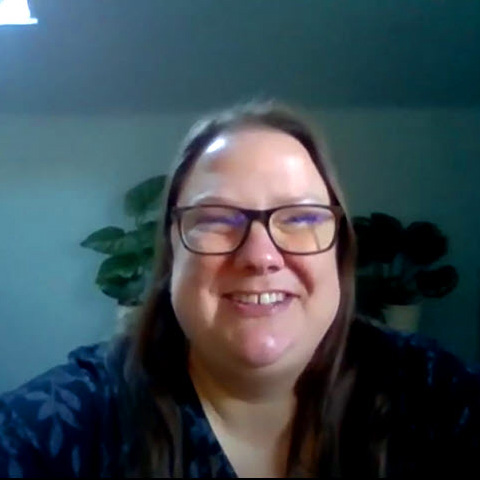
Karen Green is the Executive Director of Cat Adoption Team (CAT), the largest cat-focused organization in the Pacific Northwest, with around 3K adoptions a year and robust S/N and retention programs. She spent a decade at Best Friends before leading the Alliance for Contraception in Cats and Dogs and moving from there to CAT. She has a special interest in organizational culture, communication and conflict resolution.
“How do we create and maintain healthy organizations where our people are thriving?” Karen asks. “Thriving people do great work.”
“Sometimes we have a tendency in animal welfare to think like, well, we’re here for the animals. This is about the animals, this isn’t about the people. So we need to focus on the animals and we need to help as many animals as we can. But it’s really important to remember it’s the people who are helping the animals, so if we do things at the expense of the people that ends up being at the expense of the animals.”
“We don’t have all of the answers here,” Karen says. It’s not easy to build and maintain coalitions, work through conflict and create healthy organizational cultures, but there is hope. “You can make progress no matter where you are, and we just want to be here to help you do that.”
Self-Reflection: José Ocaño
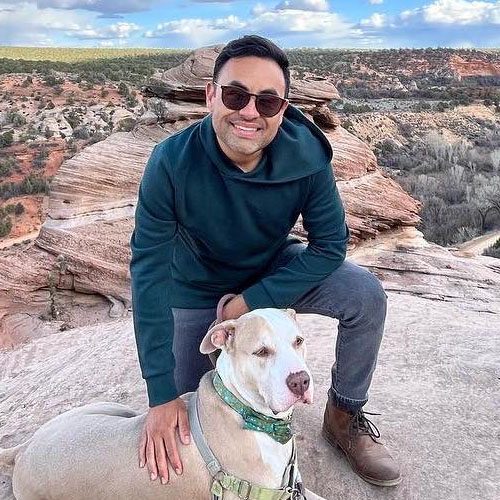
As Senior Director of People and Culture for Best Friends Animal Society, José Ocaño leads employee recruitment, development and growth.
He also leads a fair amount of Zoom meetings, which has impressed upon him the need to “bring the humanity back” to online gatherings. Something as simple as having people share their favorite food or movie or music can remind us that there are real humans behind the little boxed faces onscreen.
“He brings to our calls his deep kindness and lived experience along with his knowledge of leadership (in the most expansive sense of that word) and how to build a healthy team culture,” says Dr. Hurley. “We are so lucky to have him as a resource in our state!”
José started his animal welfare career at Pima Animal Care & Control in Arizona. During his decade there, he rose from technician to Executive Director, all the while helping the shelter reduce euthanasia and become a beacon of progressive animal sheltering.
Mapping the Movement
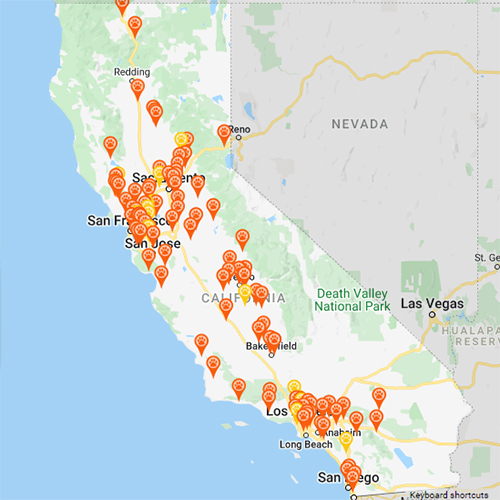
Notice anyone missing? Tell them about us!
Bright Spots: Portals
If you’ve ever attended a KSMP event, joined our mailing list, stopped by our booth at a conference, or are friends with us on social, you already know we’re crazy about portals, a small door that retrofits two standard-sized cages into double-compartment housing. A two-sided suite allows dogs and cats to eat, sleep, and lounge separate from where they eliminate and makes cleaning less stressful and more safe for both animal and caretaker: The ultimate win-win!
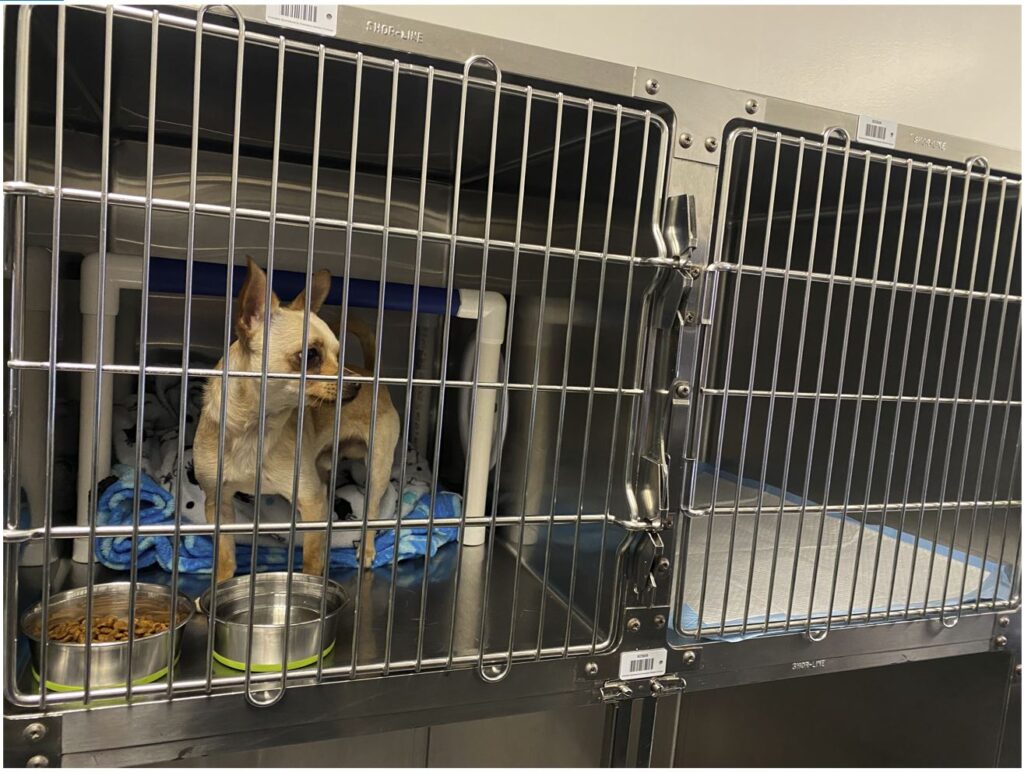
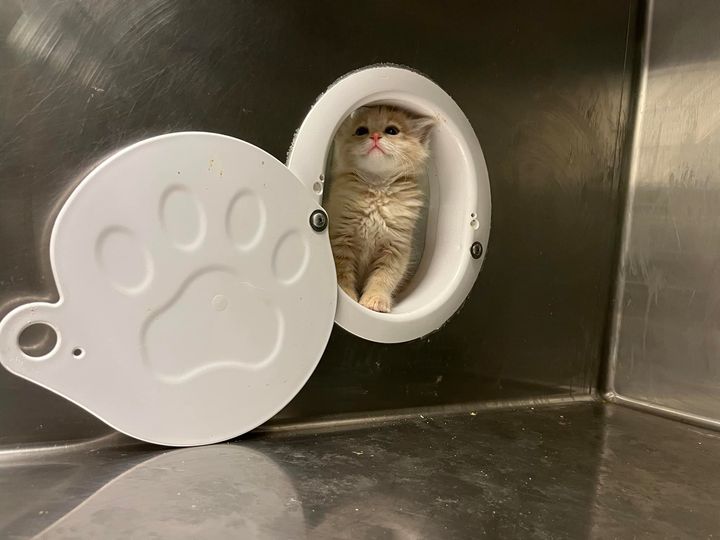
This week, in our first-ever Bright Spot, we’re raising our glass and wagging our tail in celebration of Antioch Animal Services for expanding their double-compartment cage housing to include puppies and small dogs.
Portals are often associated with feline housing, but double-compartment cage housing can be a great fit for some smaller dogs, too. The Puppy Portal has a slightly larger passthrough diameter than its Kat Portal counterpart and is built to stand up to dog use.
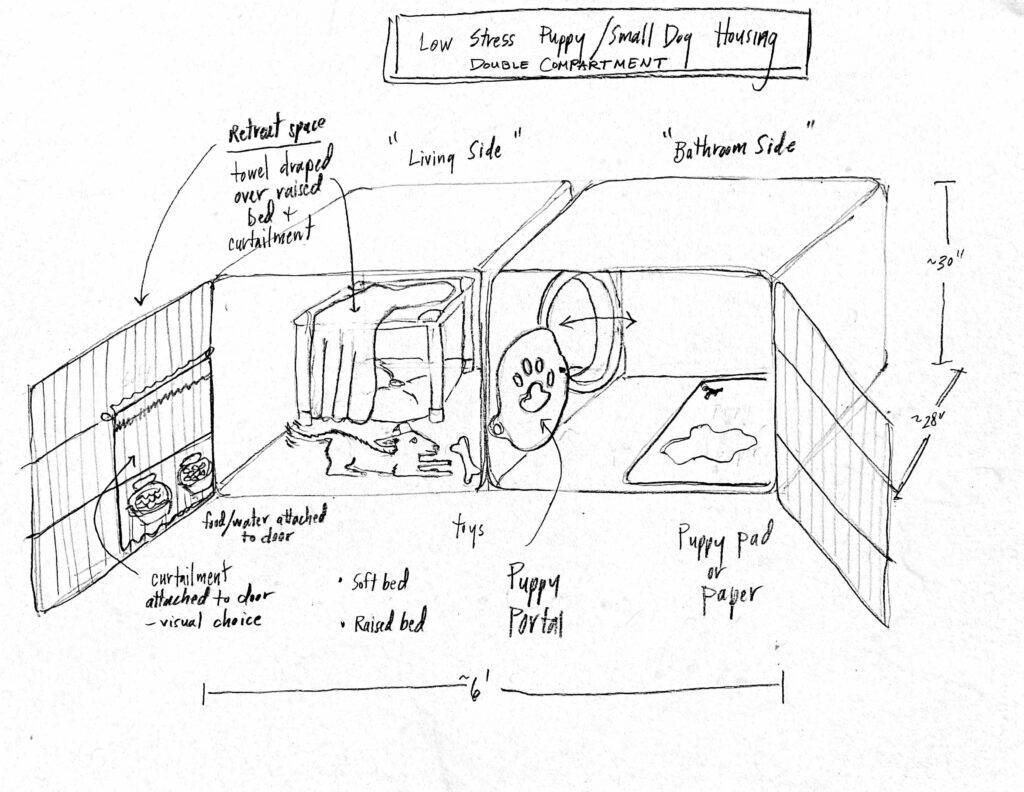
California shelters, do you want to expand housing variety and allow staff greater flexibility and choice when matching the right housing to the individual needs of the cats and dogs in your shelter?
Every single California shelter is eligible for portals through the California for All Animals program: Leave no cage unportaled! Apply for your grant today.
Huge congratulations to:
- Antioch
- City of Fresno
- SEAACA
- Contra Costa County
- Visalia Animal Services
on your recent portal installation.
To the dozen shelters awarded portals and awaiting installation: Send in those Portal Day pictures! We love seeing stretched cats, bouncing puppies and litter-free water bowls <3
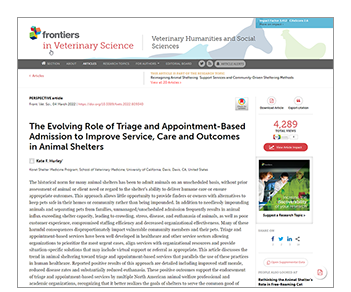
Four Rights Webinars Recap
Ensuring every animal and person the best service means getting four things right. Each animal should get the Right Care in the Right Place at the Right Time to the Right Outcome.
If you missed Dr. Kate Hurley’s introduction to the Four Rights, March Fourward: The Future Is Four, you can still catch the presentation on demand here (requires enrollment in the Maddie’s University course; you only need to register once to view this and the rest of the webinars in the Future Is Four series).
Last Tuesday, Kate and Dr. Cindy Karsten presented the final webinar in the series, describing the Right Outcome as The Right Outcome is the one that best supports the well-being of animals, honors the connections between humans and pets, stabilizes systems and maintains public health and safety.
On May 10, the Koret Shelter Medicine Program’s Drs. Denae Wagner and Chumkee Aziz, along with CAT’s Karen Green, presented an hour-long webinar focused on providing the Right Care, whether that’s in the community or within shelter walls.
Also available on-demand: Right Place, with Drs. Cynthia Karsten and Chumkee Aziz, and Right Time, presented by Drs. Cindi Delany and Kate Hurley.
This series comes to you #ThanksToMaddie, via Maddie’s® Million Pet Challenge.
Congrats to Bootcamp Grads
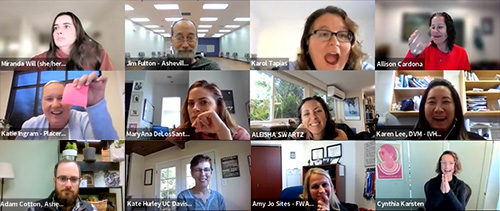
Four Rights Bootcamp Spring 2022 Cohort
- Ashville Humane Society – Asheville, NC
- Chula Vista Animal Care Facility – Chula Vista, CA
- Dallas Animal Services – Dallas, TX
- Fort Wayne Animal Care and Control – Fort Wayne, IN
- Humane Society of Weld County – Evans, CO
- Inland Valley Humane Society and SPCA – Pomona, CA
- Placer County Animal Services – Auburn, CA
- Southeast Area Animal Control Authority – Downey, CA
Behavior, Training and Enrichment Bootcamp Feb/Mar 2022 Cohort
- East Bay SPCA – Oakland, CA
- Humane Society Silicon Valley – Milpitas, CA
- Kauaʻi Humane Society – Lihue, HI
- County of San Diego Department of Animal Services – Bonita, CA
- San Francisco Animal Care and Control – San Francisco, CA
- San Jose Animal Care and Services – San Jose, CA
- SPCA of Texas – Dallas, TX
- Ventura County Animal Services – Camarillo, CA
Behavior, Training and Enrichment Bootcamp Apr/May 2022 Cohort
- Antioch Animal Service
- Best Friends Life Saving Center of Los Angeles
- Broward County Animal Care
- Contra Costa Animal Care
- Inland Valley Humane Society & SPCA
- Lollypop Farm Humane Society of Greater Rochester
- Pasadena Humane
- Sacramento SPCA
- Treehouse Humane Society
- Valley Animal Shelter
Paws to Appreciate…
Community-based sheltering
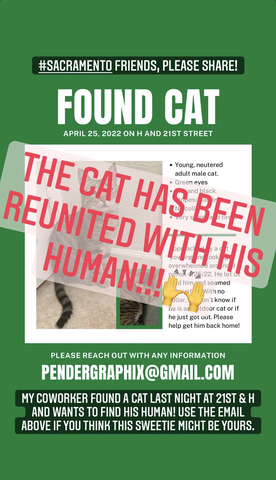
SAC Data Submission Is About to Get Much Easier
Shelter Animals Count just announced that their long-awaited API is almost ready to launch.
What does that mean for you? After you opt in, you’ll never have to enter your data manually at SAC again! Instead, your data will be sent directly from your shelter software to the Shelter Animals Count database.
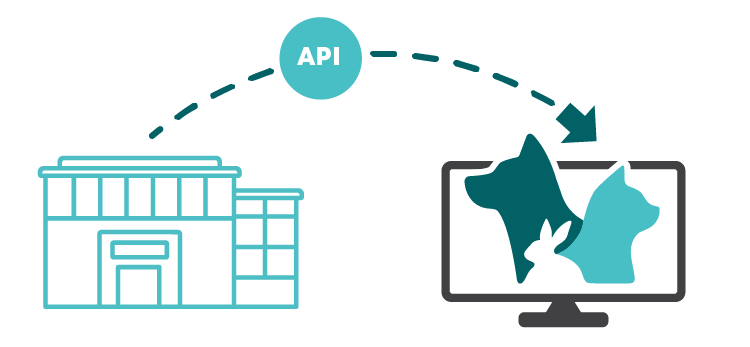
PetPoint users will be the first to have a chance to automate their SAC data entry. Click here to provide authorization. Users of Animals First, ShelterLuv, Chameleon and ShelterBuddy will see automation soon. Click here to be notified when the API is ready for you.
And if you haven’t done so already, remember to join the California Animal Welfare Association SAC coalition!

